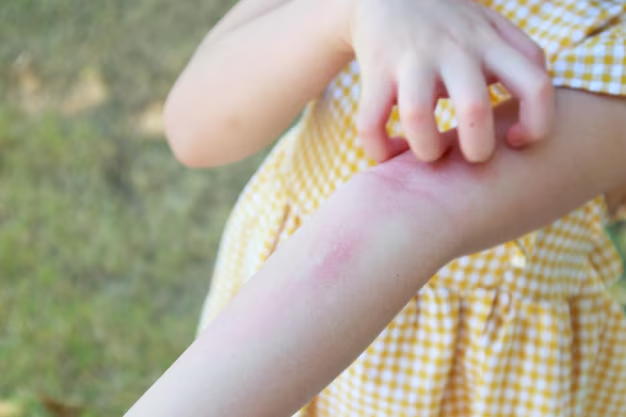Recognizing the Early Signs of Shingles: What You Need to Know
Imagine waking up to a peculiar sensation on your skin, a feeling that makes you pause and take a moment. It's not particularly painful at first, but definitely noticeable. Could this be the early stage of shingles? Understanding what shingles looks like when it first starts is crucial for timely action. In this article, we'll explore the initial appearance and symptoms of shingles, along with valuable context and practical insights for anyone who might be concerned about this condition.
What Exactly Is Shingles?
Shingles, medically known as herpes zoster, is a viral infection caused by the varicella-zoster virus, the same virus that causes chickenpox. After recovering from chickenpox, the virus lies dormant in the body and can reactivate later in life, leading to shingles. This condition is often marked by painful skin rashes and blisters primarily affecting one side of the body.
Early Indicators: What Shingles Looks Like at the Start
1. Initial Sensations:
Before any visible signs appear, one might experience sensations such as tingling, itching, or burning in a specific area. These feelings, known as prodromal symptoms, typically occur a few days to a week before the rash appears.
2. Rash Development:
The rash usually starts as small red spots that quickly evolve into fluid-filled blisters. These blisters often group together in clusters, forming a strip or band. This pattern aligns with the affected nerves, creating a distinct line rather than a sporadic rash.
3. Affected Areas:
While shingles can occur anywhere on the body, it most frequently appears on the torso and face. Notably, the rash is generally limited to one side of the body or face, following the distribution of the involved nerve.
The Path of the Rash
1. Progression of Blisters:
Within a couple of days, the initial red spots tend to develop into vesicles, or small blisters. These blisters continue to fill with fluid, becoming cloudy over time.
2. Scabbing Phase:
After about 7–10 days, the blisters begin to dry out and form scabs. These scabs eventually fall off, a process that can take two to four weeks to complete.
3. Potential Complications:
While early symptoms are crucial to recognize, it's also important to be aware of possible complications, such as postherpetic neuralgia, a condition characterized by lingering nerve pain even after the rash has healed.
Communicating with Your Healthcare Provider
If you suspect you're experiencing early signs of shingles, connecting with your healthcare provider is essential. Although this article serves as an informative guide, only a healthcare professional can provide accurate diagnoses and recommendations.
Questions to Consider Asking:
- What are the most effective management strategies for my symptoms?
- How can I reduce the risk of spreading the virus to others?
- Are there any specific preventive measures or treatments you would recommend?
Risk Factors and Prevention
1. Understanding Risk Factors:
Certain factors can increase the likelihood of developing shingles. These include:
- Age: Those aged 50 and older are at higher risk.
- Immune System Status: Individuals with weakened immune systems, due to conditions or treatments, are more susceptible.
- History of Chickenpox: Anyone who has had chickenpox can potentially develop shingles.
2. Vaccination:
Vaccines, such as Shingrix, are highly effective in reducing the risk of developing shingles and its complications. Discuss vaccination options with your healthcare provider, especially if you fall into a higher-risk category.
Myths and Misconceptions
1. Shingles Isn't Contagious:
While shingles itself isn’t transmitted from person to person, the virus can cause chickenpox in someone who hasn't had chickenpox or been vaccinated.
2. Only the Elderly Are Affected:
While age is a significant factor, younger individuals with a weakened immune system are also at risk.
3. Shingles Always Reoccurs:
Although shingles can occur more than once, repeated episodes are not common.
Practical Steps for Managing Initial Symptoms
1. Skin Care:
Gentle skin care can make a notable difference when dealing with early shingles symptoms. Consider these tips:
- Keep the Rash Clean: Use mild soap and water to cleanse the affected area lightly.
- Avoid Irritation: Wear loose-fitting clothing to minimize irritation.
- Cool Compresses: Apply cool, damp washes to ease discomfort.
2. Lifestyle Adjustments:
Managing stress and maintaining a healthy lifestyle can play supporting roles in managing early shingles symptoms:
- Rest: Ensure ample rest to support your body’s immune response.
- Balanced Diet: Eating a nutritious diet can aid in recovery.
Emotional and Psychological Support
Recognizing the emotional and psychological dimensions of experiencing shingles is equally important. Concerns like potential scarring, lingering pain, and isolation due to contagiousness can impact mental well-being.
1. Support Systems:
Reach out to friends, family, and support groups for emotional backing. Open discussions about your experiences can alleviate feelings of isolation.
2. Professional Guidance:
Counselors or mental health professionals can provide coping strategies for dealing with stress or anxiety linked to shingles.
Final Insight
Understanding what shingles looks like when it first starts is a powerful tool in recognizing early signs and prompting timely medical consultation. Although this condition can be daunting, knowing how to identify and manage early symptoms provides a significant advantage.
By demystifying the progression and characteristics of shingles, particularly in its early stages, individuals are empowered to navigate their options with confidence and proceed with the support of healthcare professionals.
Key Takeaways
- 🏷️ Early Signs: Tingling, itching, or burning sensations often precede a visible rash.
- 🩺 Seek Advice: Contact a healthcare provider if you suspect shingles.
- 📊 Risk Factors: Age, immune system status, and chickenpox history play roles.
- 🛡️ Vaccination: Consider vaccines to reduce the risk and severity of shingles.
- 💬 Emotional Support: Utilize support networks to manage psychological impacts.
This concise recap highlights practical steps and insights to empower individuals with knowledge and understanding.
